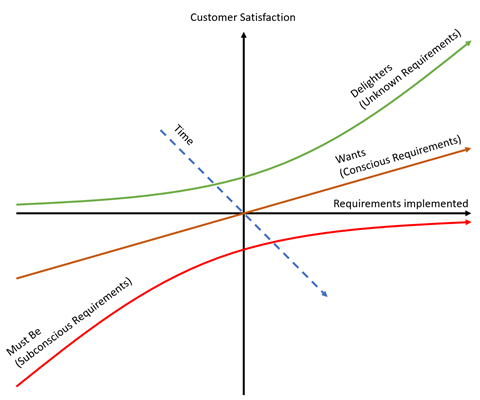
“Requirements, how complicated can it be?
Just listen to what the clients says, write it all down and you are good to go!”
Wouldn’t we all love working with requirements if it was ever so easy! The reality however looks a tad bit different. There’re few times the client knows exactly what they need, want or don’t want and it doesn’t matter if the client has a lifetime experience or just graduated from university.
The requirements necessary for building something new needs to be covering the whole organization’s needs and wishes, technical solutions and possibilities and finally the wants and needs of the end users, which is a hard task to put on a single person’s shoulders. In order to collect as many requirements as possible, the requirement manager needs to define a couple of different types of requirements; the conscious requirements, the unknown requirements, the subconscious requirements and keep in mind the aspect of time, limitations and customer satisfaction. All of these can be found in the Kano-model, founded in the 1980’s by professor Noriaki Kano.
So now that I know all these different types of requirements and aspects, is that it? Have we crossed the finish line yet?
Well, not quite. To complicate matters even more we need to consider the possible problems of human-to-human communication. The reality rarely goes:
“Hi, could you please provide me with all requirements necessary for your organization, technology and end users?”
“Sure, we already made a list, here you go!”
The different requirements the client can provide you depends on what person you’re talking to and in what context. Historically I’ve learned that regarding areas where there has been a problem previously the client is eager to provide and help create requirements to prevent the same issues to occur again, but areas where there have been no problems “don’t need any requirements”. This is a common trap, and it needs to be avoided. All areas of an organization, project, end user etc. needs to have requirements written down in order to not miss any crucial functionality that could potentially lower the satisfaction level for end users or the client.
According to Kano the conscious requirements represents the requirements the user knows it wants. Fulfilling these can potentially raise the user satisfaction.
Kano also talks about the subconscious requirements. These represents the requirements the user expects but never thinks to say out loud because they are obvious to their needs. If these requirements would be lost in building a new system the user satisfaction would decrease instantly, for what would a phone be worth if one could not make a single call with it?
The unknown requirements in Kano’s model represents the requirements no one has thought of yet but would increase the satisfaction level rapidly and provide a head start compared to competitors, like when Samsung put a camera in our mobile phones for the first time.
Limitations is usually not a fun area to consider, for who wants to be limited? But it is equally important to remember that we cannot invent time traveling no matter how much we want to, nor do we need to reinvent the wheel every time we write requirements.
Finally, the aspect of time. Time has a habit of affecting us, and therefore our needs, that takes us back to requirements. Over time the unknown requirements become conscious and conscious requirements become subconscious. Therefore, I’d say it’s never possible to relax and say we’re done, we’ve caught them all.
Finding ALL requirements is all requirement managers dream just like finding every bug is all testers dream. But it usually is just that, a dream. Finding all requirements is like finding a Unicorn, it can’t be done. What can be done however is following models such as the Kano model. It will help you, your organization and end users to set the best possible foundation for your project.

Would you like to know more about requirements? Don’t hesitate to contact us! We are eager to spread the knowledge of requirement management and would love to hear from you!
Thank you for reading and have a good day.






